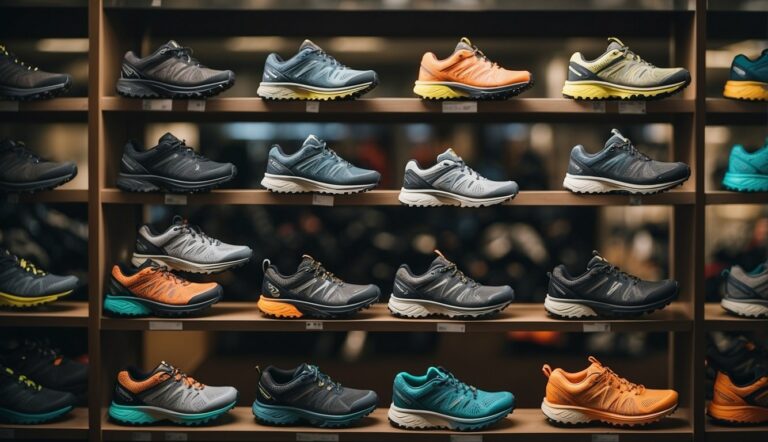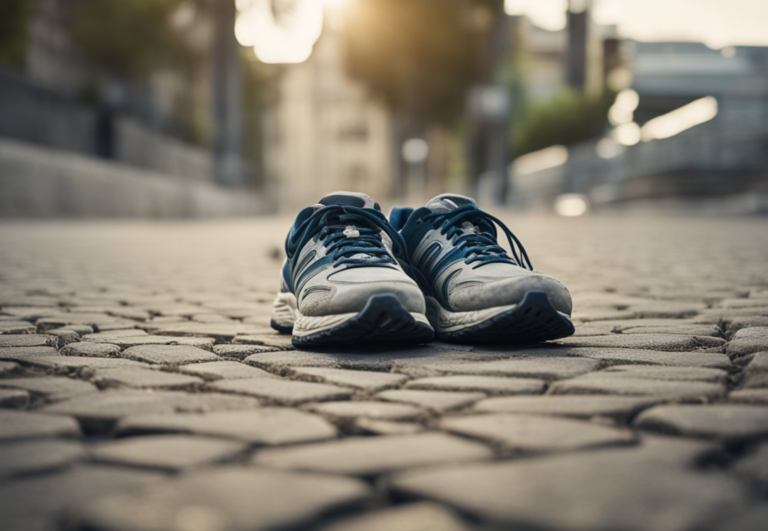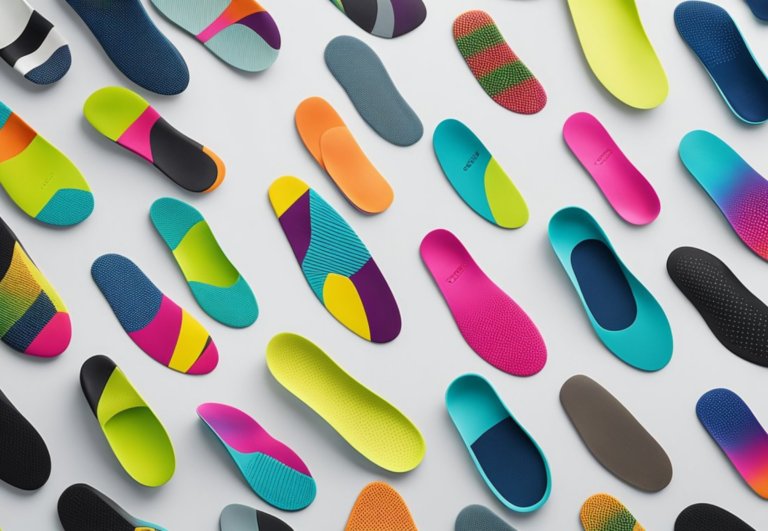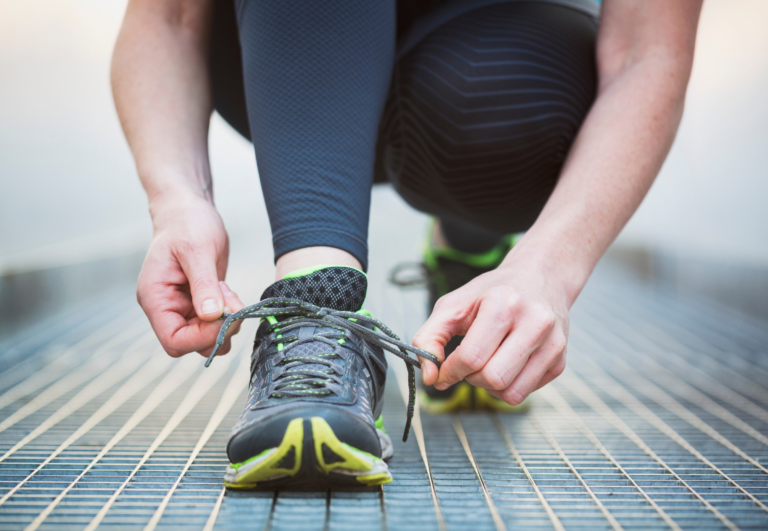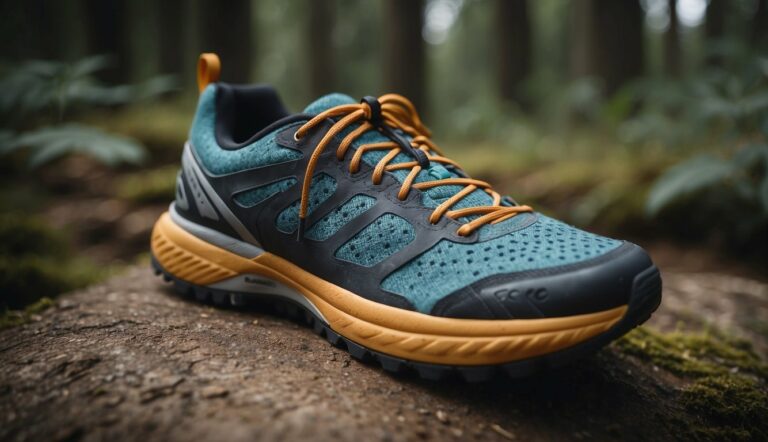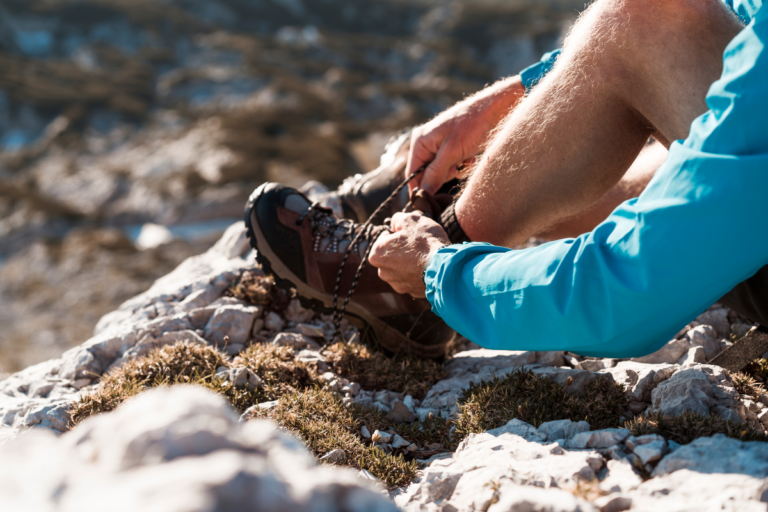Difference Between Men and Women’s Running Shoes – 5 Major Factors
Running shoes are designed differently for men and women to accommodate distinct biomechanical and anatomical differences.
Men’s shoes generally have wider heels and a uniform forefoot width, with firmer midsole cushioning to support a heavier body weight and provide stability. Women’s shoes, on the other hand, feature narrower heels, a wider toe box, and a softer midsole to cater to a lighter body weight and the biomechanical impact of a wider Q-angle. This angle, influenced by a typically wider female pelvis, can cause a greater inward knee motion during running, necessitating additional stability features in women’s running shoes.
Outsoles also differ, with men’s shoes having thicker and broader tread patterns to handle greater weight, while women’s shoes may have lighter materials and more delicate grooves.
While style and aesthetics vary widely, the functionality tailored to each gender’s needs is the primary focus, with support and comfort being paramount to prevent injuries and enhance running performance.
5 Major Differences Between Men and Women’s Running Shoes
Running shoes are tailored to accommodate the unique biomechanics of male and female runners. When you’re selecting a pair, it’s essential to understand how men’s and women’s running shoes differ to ensure optimal performance and comfort.
Heel Design and Width
Men’s running shoes typically have wider heels to align with generally broader and larger male feet. This extra width provides foundational stability and support.
In contrast, women’s shoes often feature narrower heels to snugly fit the typically slimmer shape of a woman’s foot, enhancing both comfort and stability during runs.
- Men’s feet are generally about 2% to 4% wider than women’s. This can translate to significant differences in shoe design, particularly in the heel area.
- Stability is crucial for runners, and a proper heel fit reduces the risk of injuries.
Tips:
- Runners should ensure the heel fits snugly without slipping. Test this by walking or running a few steps in the shoes before purchasing.
- Look for shoes with a heel counter that provides good grip while still allowing comfortable ankle movement.
Midsole Construction and Cushioning
Cushioning in the midsole can vary substantially between men’s and women’s shoes.
Women’s shoes are constructed to offer more flexibility due to a lighter average body weight, and may have additional cushioning to support the midsole. Men’s midsole cushioning is usually firmer to cater to a higher average body weight, ensuring effective shock absorption.
The midsole may differ in density by gender, with women’s shoes being approximately 15% softer to accommodate the lower body weight and different impact levels during running.
Tips:
- Women should look for shoes with a midsole that compresses under pressure but provides enough support for their arch and stride.
- Men might opt for a firmer midsole that can handle higher impact forces without compromising on comfort or stability.
Forefoot and Toe Box Variations
The forefoot and toe box of women’s running shoes are designed wider to provide space and comfort. Men’s shoes, conversely, are generally set to a standard width throughout.
| Feature | Men’s Shoes | Women’s Shoes |
|---|---|---|
| Toe Box Width | Standard | Wider |
| Forefoot Shape | Uniform | Expansive |
The toe box width can impact a runner’s comfort, especially on long runs where feet tend to swell. Women’s shoes commonly offer a toe box that’s wider relative to the heel than men’s.
Tips:
- Ensure there’s about a thumb’s width of space between the longest toe and the end of the shoe to accommodate foot swelling during runs.
- The forefoot should allow for natural spread of the toes without constriction, enhancing balance and push-off.
Outsole Features and Tread
The outsole of running shoes often showcases gender-specific features. Men’s outsoles have broader grooves and patterns to accommodate more substantial size and weight, resulting in optimal traction and durability.
The outsole design is tailored to different running styles and weights. Men’s shoes might have a 10% to 20% difference in outsole thickness to support heavier weights on average.
Women’s shoes may have more delicate grooves and use lighter materials, reducing the overall shoe weight for a smoother running experience.
Tips:
- Consider the type of surface you’ll be running on and choose a tread pattern that offers suitable traction.
- Inspect the outsole for wear and replace running shoes after approximately 300 to 500 miles of use to maintain proper support and traction.
Style and Aesthetics
Although functionality is paramount, aesthetic differences are also notable. Men’s running shoes frequently sport bolder, more subdued color schemes and design lines. Women’s shoes, on the other hand, often feature brighter colors and more intricate designs, reflecting a wider range of style preferences.
Running shoes for men and women address different foot shapes and physical dynamics. Paying attention to these variable elements ensures you’ll lace up the right pair that supports your individual needs.
Tips:
- While aesthetics are a personal preference, don’t let style override the importance of fit, support, and function.
- Choose a design that you feel confident wearing, as this can positively influence your mood and performance.
How Biomechanical Differences Impact Shoe Design
When designing running shoes, manufacturers take into account specific biomechanical differences between men and women to offer the best support and performance.
Your running experience can be drastically enhanced by shoes that cater to these differences.
The Q-Angle Women’s Running Shoes
The Q-angle is the angle at which the femur (thigh bone) meets the tibia (shin bone) at the knee. Women typically have a wider pelvis which increases this angle, leading to a greater tendency for the knee to turn inward when running.
Shoe design for women, therefore, often includes additional stability features to counteract this tendency and reduce the risk of injury.
Pronation Types and Support Needs
Pronation refers to the inward roll of the foot upon landing.
Understanding your pronation type is key in selecting the right shoe:
- Neutral pronation suggests your foot naturally rolls inward a moderate amount.
- Overpronation means there’s an excessive inward roll of the foot, which often requires shoes with enhanced support and motion control.
- Supination or underpronation is when the foot doesn’t roll inwards enough, necessitating a shoe with more flexibility and cushioning.
Proper support is vital as it helps in maintaining balance and stability, reducing overall injury risk.
Impact Forces and Cushioning Requirements
Impact force refers to the stress your body absorbs when your foot strikes the ground. Lower body structure and mass can influence these forces, with women generally experiencing different stress points compared to men.
| Aspect | Women’s Requirement | Men’s Requirement |
|---|---|---|
| Bone Structure | Smaller bones – More cushioning needed to offset stress. | Larger bones – Different cushioning distribution. |
| Articular Surfaces | Smaller surface area – Higher impact per unit. | Larger surface area – Impact more dispersed. |
Shoes designed for women often feature more cushioning in specific areas to account for these differences in impact force, promoting comfort and reducing the likelihood of injuries like stress fractures.
Fit and Comfort Considerations
When selecting running shoes, it’s crucial to consider how fit and comfort affect your performance and overall experience. The right fit ensures support and efficiency, while comfort features can make long-distance runs more enjoyable.
Securing the Right Fit: Beyond Shoe Size
Shoe size is just the starting point of finding the right fit. Your running shoes should accommodate the unique shape and dynamics of your foot. This means going beyond length and considering the overall contour of the shoe.
For instance:
- Men’s Shoes: Typically offer a wider fit with a “D” width.
- Women’s Shoes: Come in a “B” width, often narrower and shaped to suit a narrower heel.
These differences in design can have significant implications for how the shoe conforms to your foot, affecting both comfort and stability during runs.
The Importance of Shape and Width
The shape and width of a running shoe can immensely affect your comfort, especially on long runs. Women’s shoes are typically designed wider at the toe and narrower in the heel to fit the general foot shape of women, who may have wider hips influencing their gait.
In contrast, men’s shoes are broader overall, catering to a naturally wider foot shape.
Key takeaways about shape and width:
- Women’s Shoes: Wider toe area, narrower heel.
- Men’s Shoes: Broad across the foot, with a larger sizing scale.
By understanding these shape and width considerations, you’ll be better equipped to select a shoe that complements the mechanics of your feet, leading to improved comfort and reduced risk of injury.
Performance and Types of Running Shoes
When selecting running shoes, it’s important to understand the various categories available and how their technical features align with your running style and desired performance.
Running Shoe Categories and Their Uses
Running shoes are designed to meet specific needs and are categorized by the support and terrain they address. Here’s a helpful breakdown:
- Neutral Running Shoes: Ideal for runners with a neutral gait, offering balanced support and flexibility.
- Stability Shoes: Provide extra support for those who overpronate, where the feet roll inward excessively.
- Trail Running Shoes: Equipped with enhanced traction and durability for off-road terrain.
- Racing Flats: Lightweight and minimalistic, designed for speed and shorter races.
- Lightweight Running Shoes: A hybrid of regular trainers and racing flats, suitable for faster training days.
When you consider the surface you’ll be running on and your foot mechanics, you can better choose a category to match your needs.
Technical Aspects for Enhanced Performance
The technical features of running shoes are pivotal in maximizing your performance. It’s like having the right tools for the job. Here are some considerations:
- Cushioning: Varies by shoe type; necessary for absorbing impact, with more in stability and neutral shoes.
- Traction: Look for outsole material and tread patterns that grip your running surfaces well.
- Fit: Men’s and women’s shoes differ in size and width, ensuring a comfortable and secure fit for the unique shape of your feet.
- Weight: Lightweight shoes can improve your speed, but may offer less cushioning and support.
Remember, the right running shoes should complement your natural running style and enhance your overall running experience.
Material and Style Variations

When you pick out running shoes, the materials and styles you’ll come across are tailored to fit the needs and preferences of different genders.
Men’s running shoes are often crafted with durability in mind, utilizing robust materials that hold up to wear and tear.
Women’s running shoes lean towards lighter materials, reflecting the need for a product that’s both functional and comfortable.
Breathable mesh is a common feature in both men’s and women’s styles, which keeps your feet cool during long runs. The mesh is designed to be responsive, adapting to the movement of your feet for greater comfort.
In terms of style, the differences can be striking. Men’s and women’s running shoes come in a variety of colorways to suit your personal taste. Women’s shoes often sport brighter and more varied color combinations, while men’s shoes tend to have more subdued color palettes.
| Gender-Specific Features | Men’s Running Shoes | Women’s Running Shoes |
|---|---|---|
| Materials | Durable Fabrics | Lighter Fabrics |
| Mesh | Breathable | Breathable & Soft |
| Style | Subtle Colorways | Diverse Colorways |
Remember, the choice of materials and styles should cater to your individual preferences while also providing the necessary support for your running endeavors.
Whether you gravitate towards the tougher materials of men’s shoes or the style and comfort of women’s, the perfect shoe should feel like an extension of your foot, tailor-made for your stride.

